Labor shortages are no secret in the construction industry.
In fact, those who don’t experience this type of shortage are extremely lucky since almost 62% of contractors can’t find skilled workers.
When you also factor in the recent data about the US unemployment rate, which ranged from 3% to 6% in the past year, it’s safe to say there’s a shortage of people looking for work.
The problem is how to attract the rare job seekers to the construction industry and retain the workers already in it.
That is why we’ve prepared five different methods you can try to address the labor shortage in your company. So, read on to find out more.
In this article...
Provide Training to Existing Employees
The construction industry is incredibly dynamic and progressive. New building codes, materials, construction methods, and equipment appear nearly every week.
So, to remain competitive, construction companies need to adapt to these changes and innovations.
Now, due to the labor shortage, you might not find an expert when you need one, so why not dip into the pool of your existing workforce and train them?
While your primary concern might be getting high-skilled workers to do quality work, training can also greatly impact employee retention.
Having training programs can show them that your company cares about their career growth and in turn, you’re creating a loyal workforce.
No matter the industry, today’s employees need incentives and opportunities to learn and grow professionally. This keeps them engaged and interested in their jobs, beyond just a better salary (though that’s a bonus).
Recent research has shown that workers who don’t feel that their purpose aligns with their job are 4x more likely to quit.
For the construction industry, those turnover rates were at 56% in 2021, which is a marginal improvement in the last three years compared to other industries.
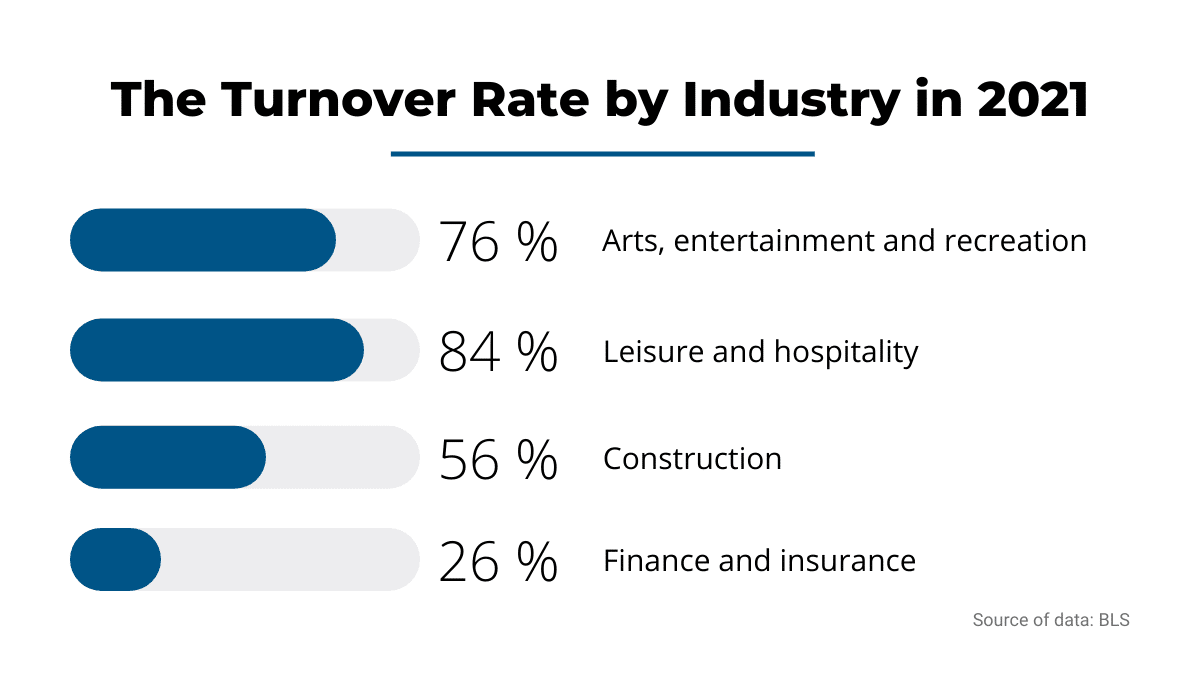
The bottom line is that if people don’t feel like they meaningfully contribute to their job or find the work they do uninspiring, there’s a higher chance they’ll leave your company.
That’s why you need to invest in their development to help them align their goals with the goals of the company.
So, what can you do?
Numerous courses and apps, such as iHASCO, can help provide essential or advanced worker training. Workers can learn anything–from operating heavy machinery to safety procedures.
Moreover, outsourcing the training might be a good solution if you don’t have the personnel or the time to do it yourself.
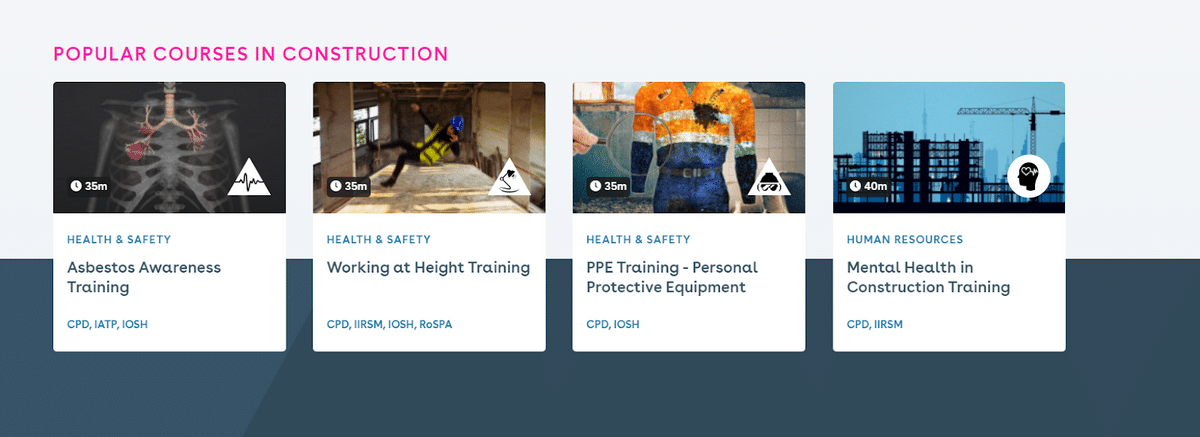
But to reap the most benefits, creating a company-wide training program that addresses your particular needs might be useful.
For example, you can follow a very successful practice from McCarthy Building Companies.
This construction company has an in-house training program that offers new and existing employees opportunities to take leadership roles and learn about different areas of their business.
In this way, they have more control and provide an intentional training program which addresses specific shortages in their company.
What’s more, they can teach their staff about the company’s unique processes and methods to ensure a more uniform approach to every construction project’s quality and outcomes.

Keep in mind that retaining employees is just as important as hiring new ones to combat labor shortages. So, one of the possible solutions is to provide training to your existing employees.
Expand Your Recruitment Efforts
According to Edward Brady, CEO of Home Builders Institute, the construction industry needs 61,000 new employees every month to keep up with the demands and cover the losses of worker retirement.
He predicts that from 2022 to 2024, an additional 2.2 million workers will be needed in construction.
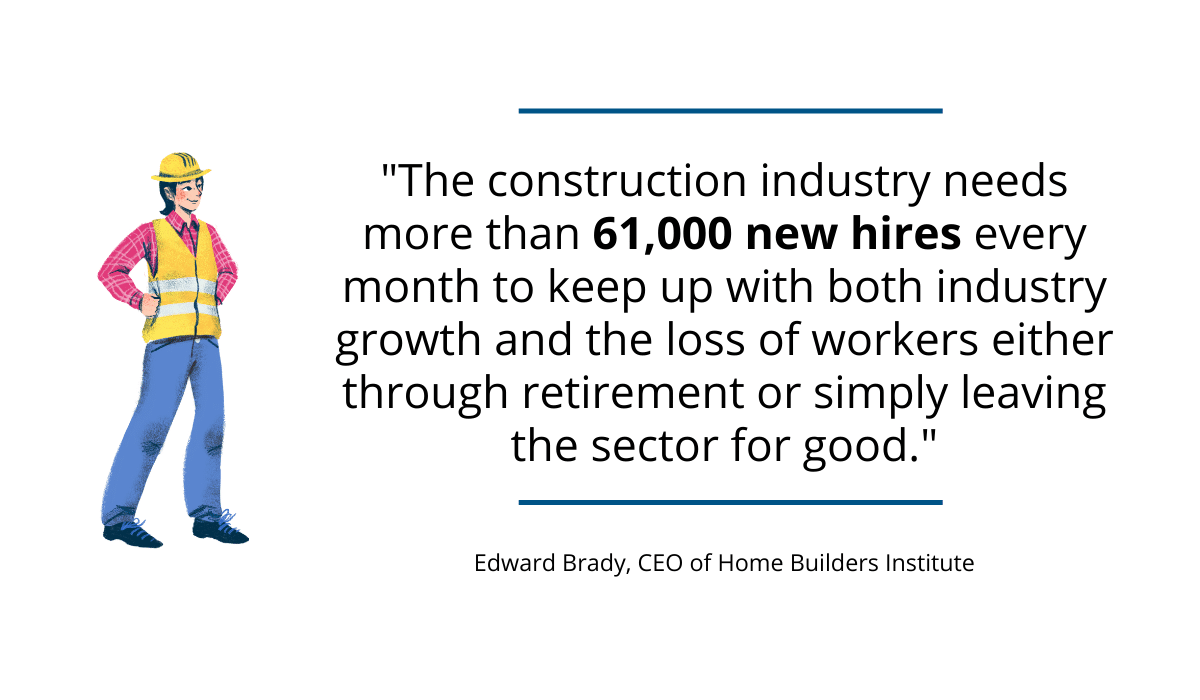
So, the most logical solution would be to hire more recruits, right? Your first instinct might be to hire only during the busy season when you’ll know which type of workers you’ll need for a specific project.
While that’s a sensible decision, the problem is that many other construction companies think the same. That is why it’s much better to keep hiring new people all year round.
You can do this in several ways:
- Attend job fairs
- Post online job ads
- Hire a recruitment agency
Writing a good job ad is not something to take lightly.
You want to attract the best candidates for the job, so you need to be clear about the requirements and transparent about the difficulty of the tasks it entails.
It won’t help if you bring in new talent, just for them to leave because you weren’t clear what their duties were from the get-go.
There are numerous online platforms where you can post your ad, such as LinkedIn, the go-to network for job seekers from any industry.

On the other hand, if you’re too busy, you can always get services from a recruitment company or hire someone in-house who will take care of the recruiting and hiring process.
They’ll find more ways to reach out and find the people that will fit the company’s needs.
Additionally, their pool of candidates might be larger than you think. As you’re well aware, the construction industry has always been a male-dominated field.
But even though women have increasingly been cultivating a presence in the industry, recent statistics don’t look very promising.
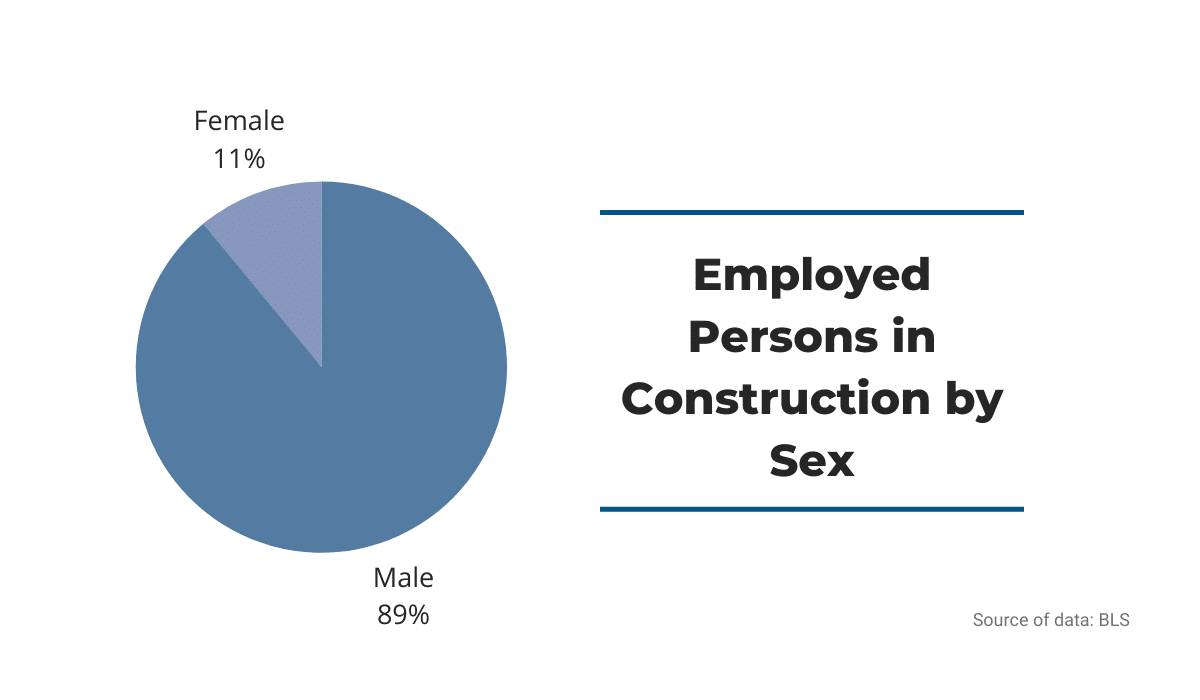
Therefore, to fill in the gaps in your workforce, consider hiring more women. Diversifying your worksites can bring great benefits.
Most importantly, women can contribute a fresh perspective and may improve worksite safety.
To quote Whitney Hill, the co-founder and head of business development for SnapADU:
“Women look at things differently. Since we often haven’t grown up in the industry, we can bring unique and fresh ideas. We also bring different skill sets to the industry.”
Regarding the skill sets Hill mentioned, women can efficiently handle difficult job roles, such as project management.
Heather Tankersley, the co-founder of Tankersley Construction, believes that women’s ability to multitask and focus on details when executing a project sets them apart.
As you’re trying to fill up crucial roles in your workforce, consider recruiting candidates all year round and broaden the pool of potential new hires.
Hire the Next Generation
Here’s an inconvenient truth: your workforce is getting old.
The latest data presented by the US Bureau of Labor Statistics shows that the average age for an American construction worker is 42 years old.

Even more devastating than that, a large segment of American construction workers is close to retirement. This will be another blow to the already short supply of workers.
So, it’s no wonder many construction companies reach out to new generations to fill the necessary roles.
However, for decades, the construction industry has had a reputation for being very labor-intensive, low-paying, and dangerous, which doesn’t appeal to younger generations.
What’s more, it doesn’t help that many educational institutions push students into college, painting it as the only path to success.
That was the experience of this young contractor who shared his experience on Reddit.
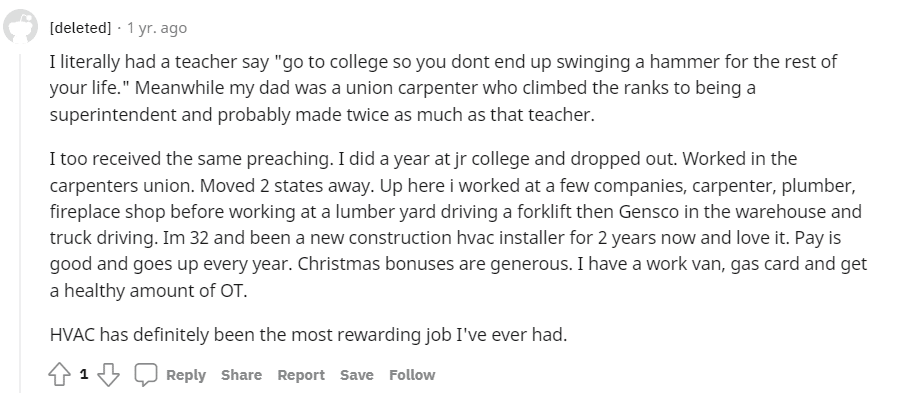
Obviously, not everyone is suited for college. Some younger people might find fulfillment in the construction industry. This young contractor was fortunate to be exposed to the industry via a family member, so it was easier for him to find a rewarding job.
This exposure is what Adam Melnick, program director with the Unionized Building and Construction Trades Council of Eastern Ontario and Western Quebec, regards as the most crucial aspect of finding new people to pursue a career in construction.
In most cases, young people haven’t come in contact with typical trades or done any similar work, so it tends to be a new environment for them.
But if they haven’t tried something before, how can they be sure it’s not for them?
Therefore, consider reaching out to your local community and giving presentations at high schools, community colleges, or universities to educate them about what they can expect if they choose a career with your construction company.
You can offer summer jobs, courses, or apprenticeships to attract students and allow them to try a new skill.

You can even partner with local trade schools and offer internships for students who have already expressed interest in the industry. They might want to consider working for you after finishing their education.
Another option is to get involved with programs like YouthBuild, which teaches construction skills to young people to make a difference in their urban and rural communities.
The organization gives young people practical experience building housing and other projects.

As you can see, there are many ways you can engage young people and spark their interest in your company, and the industry at large.
So, if you’re able to find bright and motivated people, it’ll be easier to combat labor shortages once your old workers retire.
Leverage Technology and Automation
Once companies start to consider implementing new technology, an underlying fear appears in many workers that they will be made redundant and replaced by robots.
When you see what machines are capable of doing nowadays, that fear is understandable—but without merit.
After all, when ATMs were introduced, they didn’t replace bank tellers. They just simplified their daily workload. And that is exactly what you can achieve with modern construction technologies. Your current workers can work smarter, not harder.
While construction technologies and automation are still new to the industry, the pandemic years have increased their adoption. Companies want to successfully finish their projects with fewer people, so they invest heavily in various construction tech to meet their goals.
That’s why many construction professionals are excited about the possibilities construction tech can give them while combating labor shortages.
Leo Quinn, CEO of Balfour Beatty Construction, says that digital solutions enabled them to deliver quality projects to their clients and train current employees to take advantage of new technology and ways of working.

So, here are the main benefits of using tech in the construction industry:
Increased efficiency | Construction software, tools, and machinery can optimize workflows or even shorten the time it takes to complete a task. For example, workers can finish entire floors using mortar pumps in a single day. |
Minimizing safety risks | Using construction tech can reduce the potential for injury from repetitive or high-risk tasks (work at heights). |
Easier access | Construction tech can reach areas inaccessible to workers, such as overhead or filling concrete molds. |
Now, you might be reluctant to invest in construction tech because of the high upfront costs. An average price for a construction drone, for example, can range from $2500 to $15 000, while contracts for self-driving and autonomous heavy machinery can reach millions.
But these costs even out because you don’t have to worry about payroll, worker’s compensation, benefits, etc. Even better, machines are more productive because they don’t have to go on breaks or take vacations.
Obviously, construction tech will not completely replace humans (since there has to be someone to program and supervise it).
Still, they can handle repetitive and simpler tasks quicker, so your worksites are more productive with less staff.
Improve Collaboration
When contractors are experiencing labor shortages, the most common advice seems to be to pay workers more.
Well, the pay of construction workers has been steadily rising for years, but the shortage problem hasn’t been solved.
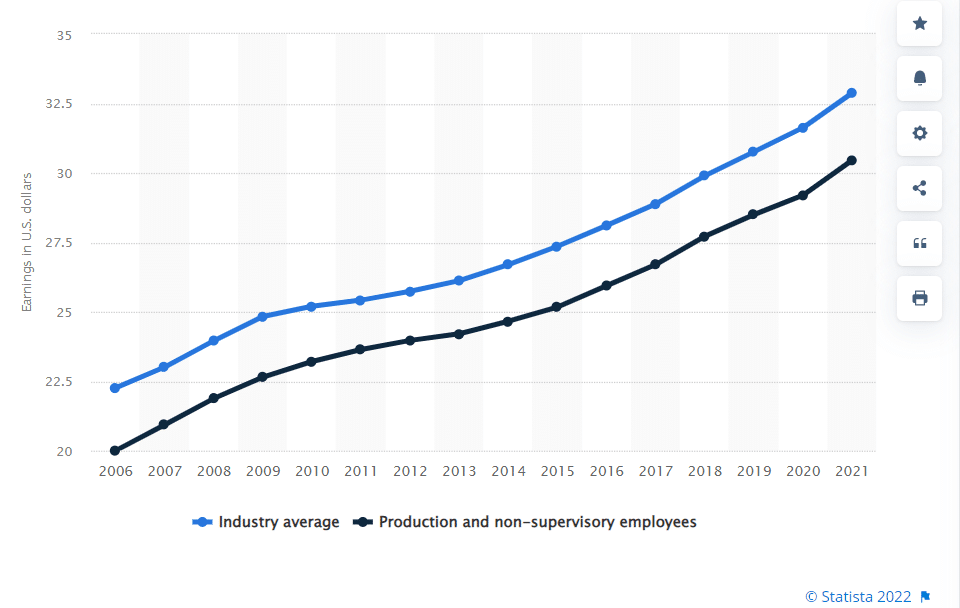
This is because throwing more money at your team members isn’t the solution. Workers entering the industry want more than a decent paycheck.
A major factor in choosing a job is the workplace culture or collaboration with other people on the worksite.
In a nutshell, the quality of communication on a construction job can contribute to retention rates and the success of a construction project, as these two contractors testify in a construction forum.

Even though they mostly work alone, once they have to turn to others, the most important thing is to collaborate with people that understand their workflow and share important information. This is what being ‘’in sync’’ means.
In large construction companies, the ability to communicate is even more important since employees will be stationed on worksites that might be miles and miles away from the office or other workers.
Sharing information and sending daily reports and requests for information should be optimized so everyone can be on the same page about the project requirements and work with others better.
Simply put, when workers can’t communicate effectively, it leads to frustration, negativity, and blame-shifting, resulting in negative workplace culture. Ultimately, this can prompt workers to leave the company and put your projects at risk.
One solution is to have construction software for seamless communication.
There are many options to fit your company’s needs, but if, for instance, your workers frequently get in conflicts about missing or unavailable tools, then GoCodes can be your solution.

When your workers can look up asset information easily, they can coordinate their work with asset availability and contact the right person if an asset goes missing.
Keep in mind that your workers have to communicate with various people onsite and in the office. Once you improve their communication flow, you ensure your project progresses according to plan, even with less staff onboard.
Conclusion
If you’re facing a labor shortage, don’t despair.
There are numerous ways you can find skillful, bright, and motivated people if you’re willing to consider alternative routes, broaden the candidate pool, and invest in modern technologies. So, implement some of our tips to combat the global construction labor shortage.






